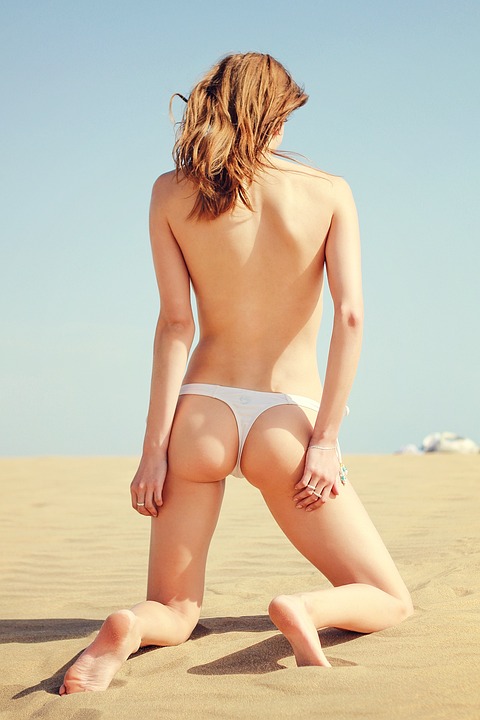Bikini Line Chafing: Causes, Prevention, and Treatment
As summer approaches and temperatures rise, many women look forward to spending time at the beach or poolside. However, for some, the thought of wearing a swimsuit can be daunting due to the discomfort caused by bikini line chafing. In this article, we will discuss what causes bikini line chafing, how to prevent it, and the best treatments for this irritating condition.
What is Bikini Line Chafing?
Bikini line chafing is a common problem that occurs when the skin in the bikini area rubs against clothing or other skin surfaces, causing irritation, redness, and sometimes even bleeding. This condition can be caused by a variety of factors, including friction, sweat, and bacteria buildup.
Causes of Bikini Line Chafing
1. Friction: The most common cause of bikini line chafing is friction from clothing or other skin surfaces. This can occur when wearing tight-fitting swimsuits, shorts, or underwear that rub against the skin.
2. Sweat: Sweating in the bikini area can also cause chafing. When sweat accumulates in the folds of the skin, it can irritate the skin and cause chafing.
3. Bacteria: Bacteria can build up in the bikini area, especially if the skin is not kept clean and dry. This can lead to infections and chafing.
4. Shaving: Shaving the bikini area can also cause chafing. When hair is removed, the skin is more vulnerable to irritation and friction.
5. Allergies: Allergic reactions to certain fabrics, detergents, or other products can also cause chafing.
Preventing Bikini Line Chafing
1. Wear the right clothing: Choosing the right clothing can help prevent chafing. Avoid tight-fitting clothing and opt for loose-fitting, breathable fabrics.
2. Keep the area clean and dry: Keeping the bikini area clean and dry can help prevent bacterial buildup and reduce the risk of chafing. After swimming or sweating, change out of wet clothing and dry the area thoroughly.
3. Use a lubricant: Applying a lubricant such as petroleum jelly or baby powder to the bikini area can help reduce friction and prevent chafing.
4. Avoid shaving: Avoiding shaving the bikini area can help prevent chafing. If you do choose to shave, be sure to use a sharp razor and shave in the direction of hair growth to reduce irritation.
5. Use anti-chafing products: Anti-chafing products such as powders, gels, and balms can help reduce friction and prevent chafing.
Treating Bikini Line Chafing
If you do experience bikini line chafing, there are several treatments that can help alleviate the discomfort and promote healing.
1. Cool compresses: Applying a cool compress to the affected area can help reduce inflammation and soothe the skin.
2. Moisturize: Applying a moisturizer or lotion to the affected area can help soothe the skin and promote healing.
3. Avoid tight-fitting clothing: Avoid wearing tight-fitting clothing that can further irritate the skin.
4. Keep the area clean and dry: Keeping the area clean and dry can help prevent bacterial infections and promote healing.
5. Use over-the-counter treatments: Over-the-counter treatments such as hydrocortisone cream or anti-fungal cream can help reduce inflammation and promote healing.
Conclusion
Bikini line chafing can be a frustrating and uncomfortable condition, but there are several ways to prevent and treat it. By wearing the right clothing, keeping the area clean and dry, and using lubricants and anti-chafing products, you can reduce your risk of chafing. If you do experience chafing, cool compresses, moisturizers, and over-the-counter treatments can help alleviate the discomfort and promote healing. With these tips, you can enjoy your time at the beach or poolside without the discomfort of bikini line chafing.
Frequently Asked Queries About Bikini Line Chafing
What is bikini line chafing?
Bikini line chafing is a common skin irritation that occurs when the skin rubs against clothing or other skin, causing redness, itching, and discomfort. It is most commonly experienced by women in the area where their underwear or swimsuit bottoms rub against their skin.
Three most important information:
1. Bikini line chafing is a common skin irritation caused by friction.
2. It is most commonly experienced by women in the area where their underwear or swimsuit bottoms rub against their skin.
3. Symptoms include redness, itching, and discomfort.
What causes bikini line chafing?
Bikini line chafing is caused by friction between the skin and clothing or other skin. It can be exacerbated by tight-fitting clothing, sweating, and other factors that increase friction. The use of certain products, such as perfumes, lotions, and soaps, can also contribute to chafing by irritating the skin.
Three most important information:
1. Bikini line chafing is caused by friction between the skin and clothing or other skin.
2. Tight-fitting clothing, sweating, and certain products can exacerbate chafing.
3. Avoiding these factors can help prevent chafing.
How can I prevent bikini line chafing?
Preventing bikini line chafing involves several strategies, including wearing loose-fitting clothing, avoiding harsh soaps and fragrances, keeping the area dry, and using a lubricant such as petroleum jelly or anti-chafing products. It is also important to avoid activities that increase friction, such as running or cycling, and to take breaks to allow the skin to rest.
Three most important information:
1. Strategies for preventing chafing include wearing loose-fitting clothing, avoiding harsh soaps and fragrances, and keeping the area dry.
2. Using a lubricant such as petroleum jelly or anti-chafing products can also help prevent chafing.
3. Avoiding activities that increase friction and taking breaks to rest the skin are also important.
How do I treat bikini line chafing?
Treating bikini line chafing involves several strategies, including cleaning the affected area with a mild soap and water, applying a cool compress to reduce inflammation, using a moisturizer to soothe the skin, and using over-the-counter creams or ointments to reduce itching and discomfort. In severe cases, a doctor may prescribe a stronger medication or recommend other treatments.
Three most important information:
1. Strategies for treating chafing include cleaning the area, applying a cool compress, and using a moisturizer.
2. Over-the-counter creams or ointments can also help reduce itching and discomfort.
3. In severe cases, a doctor may prescribe a stronger medication or recommend other treatments.
When should I see a doctor for bikini line chafing?
Most cases of bikini line chafing can be treated at home with over-the-counter remedies. However, if the symptoms persist or worsen despite treatment, or if there are signs of infection such as pus or fever, it may be necessary to see a doctor. Other reasons to seek medical attention include severe pain, bleeding, or swelling.
Three most important information:
1. Most cases of chafing can be treated at home with over-the-counter remedies.
2. If symptoms persist or worsen, or if there are signs of infection, it may be necessary to see a doctor.
3. Other reasons to seek medical attention include severe pain, bleeding, or swelling.
Introduction
Bikini line chafing is a common problem that affects many women. It occurs when the skin in the bikini area rubs against clothing, causing irritation and discomfort. Unfortunately, there are many misconceptions about bikini line chafing that can make it difficult to find effective solutions. In this article, we will explore some of the most common misconceptions about bikini line chafing and provide accurate information to help you manage this irritating condition.
Misconception 1: Bikini line chafing only affects overweight women
One of the most common misconceptions about bikini line chafing is that it only affects overweight women. While excess weight can certainly exacerbate the problem, anyone can experience bikini line chafing. This is because it is primarily caused by friction, which can occur no matter what size you are. In fact, women who are very fit and active may be more prone to bikini line chafing because their thighs are more muscular and can rub together more easily.
Misconception 2: Only tight clothing causes bikini line chafing
Another common misconception about bikini line chafing is that it only occurs when wearing tight clothing. While tight clothing can certainly increase the likelihood of chafing, it is not the only cause. Loose clothing can also cause friction, particularly if it is made of rough or scratchy material. Additionally, clothing that is too small or too big can cause chafing because it does not fit properly and moves around too much.
Misconception 3: Bikini line chafing is only a cosmetic issue
Many people believe that bikini line chafing is only a cosmetic issue and that it does not pose any serious health risks. While it is true that chafing is primarily a nuisance, it can also lead to more serious problems if left untreated. Chafed skin is more vulnerable to infection, and if the irritation is severe enough, it can cause bleeding and scarring. Additionally, the discomfort caused by chafing can make it difficult to exercise or engage in other activities, which can have negative effects on your health.
Misconception 4: Powder is the best way to prevent bikini line chafing
Many women believe that the best way to prevent bikini line chafing is to use powder. While powder can be helpful in some cases, it is not always the most effective solution. Powder can clump up and become ineffective when exposed to sweat or moisture, and it can also be messy and difficult to apply. Additionally, some powders can be irritating to the skin, which can worsen chafing. Instead of relying solely on powder, it is important to wear clothing that fits properly and is made of breathable, moisture-wicking material.
Misconception 5: Bikini line chafing can only be treated with creams and ointments
Another common misconception about bikini line chafing is that it can only be treated with creams and ointments. While these products can certainly be helpful in reducing irritation and promoting healing, they are not the only solution. In addition to using creams and ointments, it is important to keep the affected area clean and dry, wear loose-fitting clothing, and avoid activities that can exacerbate the problem. In some cases, a change in your exercise routine or weight loss may also be necessary to reduce the frequency and severity of chafing.
Bikini Line Chafing
#Bikini #Line #Chafing


